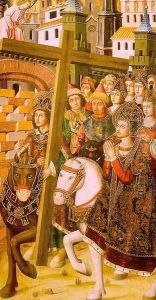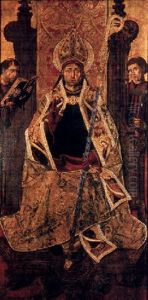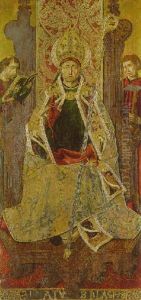Martin Bernat Paintings
Martin Bernat was a Spanish painter from the late Gothic period, whose life and work were predominantly tied to the region of Aragon. While exact dates of his birth and death are not definitively established, it is generally thought that he was born around 1454 and died around 1495. His artistic activities are mostly documented from the 1470s until the late 1490s.
Bernat's work exemplifies the International Gothic style, which was characterized by elegant and graceful figures, vibrant colors, and intricate details. This style was prevalent in European art during the late Middle Ages, bridging the gap between the medieval period and the Renaissance. Bernat often collaborated with another prominent Aragonese painter, Bartolomé Bermejo, and their works display a sophisticated understanding of both local Spanish artistic traditions and the innovations coming out of the Northern European Renaissance.
Although not much is known about Bernat's training or early life, his career is well documented through various contracts and surviving works. He was particularly active in creating altarpieces, which were a major form of religious art during that time, intended for the decoration of Christian churches. One of his most significant contributions was to the altarpiece of the church of San Martin in Huesca, Spain.
Bernat's style developed over the course of his career, showing an increasing mastery of spatial representation and human anatomy, which hints at the early influences of Renaissance art on his Gothic sensibility. Unfortunately, much of Martin Bernat's work has not survived, or the attribution is uncertain due to the collaborative nature of many of his projects. Despite this, his role in the transition from medieval to Renaissance styles in Spanish art is acknowledged by art historians, and his works that do remain are celebrated for their beauty and historical value.
The scarcity of personal details about Martin Bernat's life, including his training, influences, and patrons, is not unusual for artists of his time. However, his contributions to the art of the Aragonese court and his collaborations with other artists of his era have secured his place in the history of Spanish art. His legacy is reflected in the pieces that continue to be studied and appreciated for their craftsmanship and place within the broader narrative of European art history.


